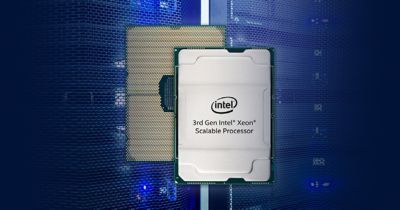ANSYS BLOG
June 24, 2022
Properly Power Your Simulation Workloads
The increasing complexity of new designs, the need to analyze multiple physics, and a push to expand the use of simulation throughout engineering organizations have placed a greater demand for compute resources on existing IT infrastructures. High-performance computing (HPC) clusters can provide the necessary compute power, but it is critical to match the right HPC hardware configuration to engineering workflows to ensure optimal performance.
Identifying the correct HPC configuration can be a challenge, however, because different simulation workflows benefit from different elements of the hardware features: core counts, clock speeds, memory capacity, input/outpput (I/O) specifications, etc. A new Ansys white paper focused on central processing unit (CPU) and HPC configurations for computed-aided engineering (CAE) provides helpful guidance.

There are many hardware and software variables to consider when establishing a fast, efficient engineering workflow.
Matching the Processor to the Workload
The key to improving CAE performance and reaching key insights faster is a combination of processors and HPC systems suited for the specific CAE workloads. The processor market, meanwhile, has undergone a revolution, with more powerful CPUs emerging that are equipped with higher core counts, faster speeds, and built-in support for HPC and artificial intelligence (AI) acceleration, along with much higher memory and cache levels.
However, the acceleration and optimization of different CAE workloads will rely on varying combinations of core counts, clock speeds, and other CPU features.
Because CPU and HPC configuration selection can be challenging, Ansys has released a white paper titled How to Select the Best Processor and HPC System for Your Ansys Workloads to provide guidance for engineering department and IT managers. The white paper helps manufacturers decide which processor and HPC system is most appropriate for their computational fluid dynamics (CFD), Ansys Mechanical, and Ansys LS-DYNA workloads.

A new white paper includes benchmarking data on Ansys workloads comparing different Intel® Xeon® Scalable processors.
For example, to achieve optimum performance, CFD applications within Ansys software need plenty of memory capacity and memory bandwidth. But for CFD workloads running on large clusters, the communication throughput is often more important than compute speed. Finite element analysis (FEA) workloads, on the other hand, don’t necessarily need high memory capacity, and memory bandwidth is of less importance. Instead, these workloads require high clock speeds and higher core counts.
In addition to outlining how to match the right processor to the CAE workload, the paper also offers guidance when it comes to other CAE data center design challenges, such as keeping server footprint to a minimum, lowering total cost of ownership (TCO), and reducing cost to the environment (TCE) by shrinking energy consumption.
The paper also provides an overview of the HPE Apollo 2000 Gen10 Plus system, which is a dense multiserver platform that provides substantial performance and workload flexibility into a small data center space — all while delivering the efficiencies of a shared infrastructure.
The HPE Apollo 2000 platform is designed to provide a path to scale-out architecture for traditional data centers so enterprise customers can realize the space-saving value of density-optimized infrastructure, but in a cost-effective and nondisruptive manner. The HPE Apollo 2000 Gen10 Plus system also offers twice the density of traditional 1U rack mount systems, which can help data center managers maximize the use of valuable and costly data center space. As Ansys workloads increase, this type of platform provides a scalable and affordable path for data center modernization.
The white paper also includes benchmarking data on Ansys workloads running on a four-node cluster comparing different Intel® Xeon® Scalable processors. Benchmark data is provided for Ansys CFX, Ansys Fluent, and LS-DYNA. The white paper illustrates several examples of the performance gains manufacturers can expect thanks to the 3rd Gen Intel Xeon processor’s improved memory, compute, and I/O features.
Download the How to Select the Best Processor and HPC System for Your Ansys Workloads white paper.